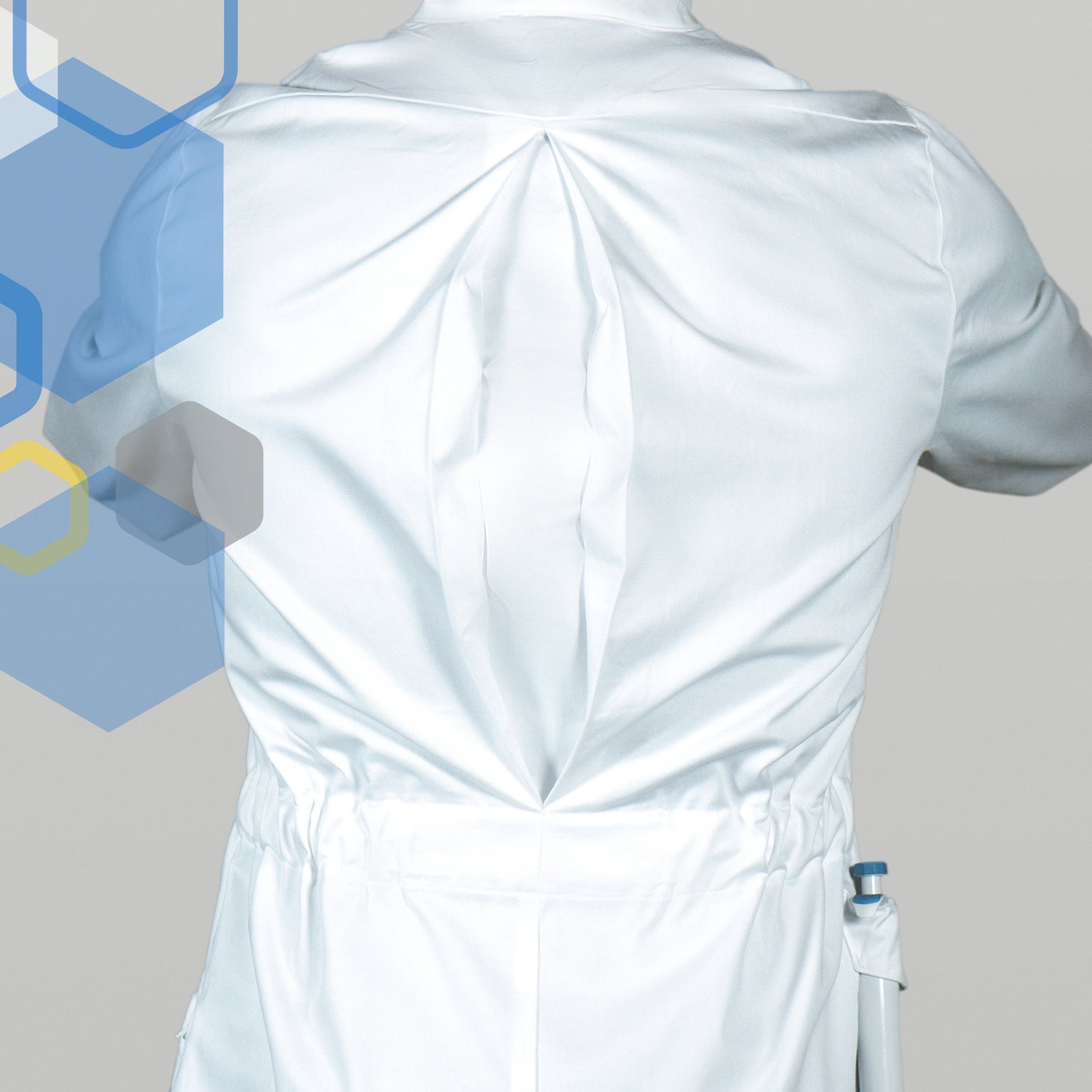Your Cart is Empty
Are you Frustrated with basic 3-pocket Unisex lab coats that...
- Make you feel claustrophobic when you bend, sit, and reach?
- Scatter your tools everywhere and leave you disorganized?
- Leave your skin exposed to chemicals and contamination?
- Make you feel like you're not a real scientist?
How to make your day better:

Move without restrictions
Pleats in the back and rear keep you nimble and comfy, even when sitting.

Stay organized & efficient
6 custom pockets and 3 loops so everything is ready when you need it.

Protect your vulnerable skin
Long knit cuffs, quick-release snaps and a 2-way collar give max protection.

Finally love your lab coat
Feel the difference in your day when your lab coat doesn't get in the way.
Trusted by 2000+ Scientists Including:
Talked about by:
You're not alone: We found most scientists hate their lab coats
Our survey of over 1000 laboratory scientists showed that more than 90% had a problem with their lab coat.
We understand that poorly designed lab coats aren't just an inconvenience – they're a barrier between you and groundbreaking research.
We heard your stories
Your feedback made it clear that simple lab coats from big companies are affecting your daily life. You also told us exactly how to solve these problems...so we did.
We spent 2 years testing prototypes on ourselves and 30 working scientists and educators in diverse labs. Once they said "This is the best lab coat I've ever worn", we crowdfunded production with the science community.
Measure, customize, and order online by card or purchase order
1. Use our detailed size charts for the perfect fit for any gender
These lab coats aren't one-size-fits-all blobs. Take a few minutes to measure and get the size that helps you look and feel great.
2. Add optional name and logo embroidery right from the order page
Add your name and/or institutional logo and we'll have it ready in 2-3 weeks. We just can't do officially licensed university logos.
3. Choose your shipping method and order online or request a quote
We ship non-customized orders within 1 business day. For purchase orders or group discounts of 10 or more, use this short request form.
Why the lab coat project?
We know that you're capable of doing amazing research. You just need the right tools.
The problem is big lab coat companies have convinced institutional buyers that cheap, 3-pocket, rectangular lab coats are good enough for you to do your job...but they actually make you feel like an unprofessional, inefficient blob when you step into the lab.
We believe a great lab coat that stays out of your way will let your inner genius shine.
It's so frustrating to feel constant discomfort and clumsiness in the lab...which is why we collected data from over 1000 scientists and engineers to identify the exact source of each problem.
Here's how to make every day in your lab a little better:
- Select the style that most closely matches your body type or gender and measure yourself against the size charts to find your best fit.
- If you want to embroider your name or logo, type in or upload files right on the product page with a live preview.
- Checkout with any of several payment methods instantly, or fill out a quote request form if you need a group order (10+) or to pay with a purchase order.
So jump to the Louis or Curie pages to checkout now so you can stop the daily frustrations in the lab and start doing the amazing research you've always been capable of.
See all LAB COATS-
Let us help you advocate for yourself and your lab mates! We've prepared this 1-page PDF you can print out and take to your next lab meeting.
-
We publish detailed size charts to make sure you find the right fit the first time. You just need to check it against your own measurements. However, the lab coats can be returned or exchanged if you cover the shipping and restocking cost (usually around $12 total in the USA).
-
These meet the requirements of almost every freshmen and sophomore level chemistry lab class. For research, please check with your lab safety officer about hazards, laundering details, and any compliance markings you may need (FR, CE, etc.). For more details, visit our Lab Coat Safety & Care FAQ Page.
-
You're getting certified American-grown cotton to ensure we don't support forced labor practices common in Chinese cotton used in other lab coats. Our snaps and zippers supplier (YKK) is the most trusted hardware manufacturer in the world. The abundance of pockets, zippers and snaps takes a lot of work to sew. Just compare it to a regular lab coat and you'll see the difference in detail!
























